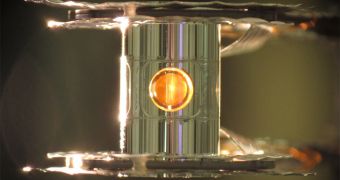Physicists with the National Ignition Facility (NIF) announced recently that they were able to obtain significant amounts of nuclear fusion in a laser experiment for the first time ever. This breakthrough marks a very important moment in fusion physics, and brings the goal of recreating conditions from inside the Sun here on Earth closer to reality.
The NIF is a laser-based inertial confinement fusion research device installed at the US Department of Energy's (DOE) Lawrence Livermore National Laboratory (LLNL), in California. Scientists here have been using the facility's 192 high-powered laser beams to achieve nuclear fusion for years.
Until earlier this month, this goal seemed to remain as remote as it has ever been. However, due to maintenance and improvements brought to the lasers, and theoretical advancements in understanding how fusion works inside stars, the team was able to move forward and create this phenomenon.
LLNL researcher Omar Hurricane says that nuclear fusion was achieved because researchers got more energy from the reaction than what they had put in. Fusion is a self-sustaining reaction that involves the merger of deuterium and tritium (both hydrogen isotopes) to produce helium and a lot of energy.
The new breakthrough is not meant to suggest that we will be able to use fusion energy tomorrow. Only 1 percent of the total energy output of the 192-laser array reached the tiny fuel pellet that was ignited in these experiments. This percentage needs to be improved drastically in order for fusion to become feasible.
“They didn't get more fusion power out than they put in with the laser,” comments the leader of the UK fusion experiment called the Joint European Torus (JET), Steve Cowley. What the NIF team achieved was an energy return higher than the 1 percent laser energy that struck the fuel, but lower than the full 100 percent of energy the laser released overall.
The football field-sized laser installation at NIF is capable of producing up to 500 trillion watts of power for very brief duration. This energy level is higher than the amount of energy the entire Universe produces over the same time frame, NPR reports.
Despite the issues still plaguing the NIF experiment, “I think it's still a very important step forward, they reached fusion conditions, they made some fusion happen, and that's not been done before” with a laser, Cowley adds.

 14 DAY TRIAL //
14 DAY TRIAL //